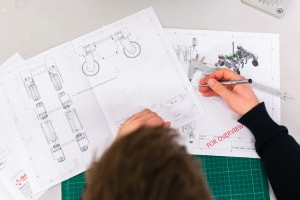In this free online course, you are introduced to the world of Functional and Conceptual Design Engineering. You will explore the three Product Design Elements, as well as the process of developing a Product Mission Statement and how Product Functions are established. Demonstrations, problems, examples and assessment questions in this instructor-led video-based course, are designed to provide you with a comprehensive foundation, which will enable you to take serious steps into this career.
The course begins by introducing you to the stages in the Product Development Process. Then, the concept of developing a Mission Statement will be discussed, which conveys an exciting vision of the new product to be developed and the project goals. You will explore the concept of Functional Decomposition, a systematic process of transforming the customer's needs to a clear specification of the functional requirements of the product.
You will learn about the Birth and Growth of a product. You will gain insight into Reverse Engineering and Technical Questioning. You will discover the importance of carrying out a Customer Needs Analysis exercise. Finally, you will study Target Specifications, Product Architecture, and Concept Development. This course will be of interest to Functional and Conceptual Design Engineering students, or those professionals looking to enhance their career prospects in the Functional and Conceptual Design Engineering Industry. Why wait? Start this course today.
What You Will Learn In This Free Course
View All Learning Outcomes View Less All Alison courses are free to enrol, study, and complete. To successfully complete this Diploma course and become an Alison Graduate, you need to achieve 80% or higher in each course assessment.
Once you have completed this Diploma course, you have the option to acquire an official Diploma, which is a great way to share your achievement with the world.
Your Alison certificate is:
- Ideal for sharing with potential employers.
- Great for your CV, professional social media profiles, and job applications.
- An indication of your commitment to continuously learn, upskill, and achieve high results.
- An incentive for you to continue empowering yourself through lifelong learning.
Alison offers 2 types of Diploma for completed Diploma courses:
- Digital Diploma: a downloadable Diploma in PDF format immediately available to you when you complete your purchase.
- Physical Diploma: a physical version of your officially branded and security-marked Diploma
All Diplomas are available to purchase through the Alison Shop. For more information on purchasing Alison Diploma, please visit our FAQs. If you decide not to purchase your Alison Diploma, you can still demonstrate your achievement by sharing your Learner Record or Learner Achievement Verification, both of which are accessible from your Account Settings.











 Avg. Hours
Avg. Hours  Contains Video
Contains Video  CPD Accredited
CPD Accredited 
 Total XP:
Total XP: 
 Knowledge & Skills You Will Learn
Knowledge & Skills You Will Learn 






